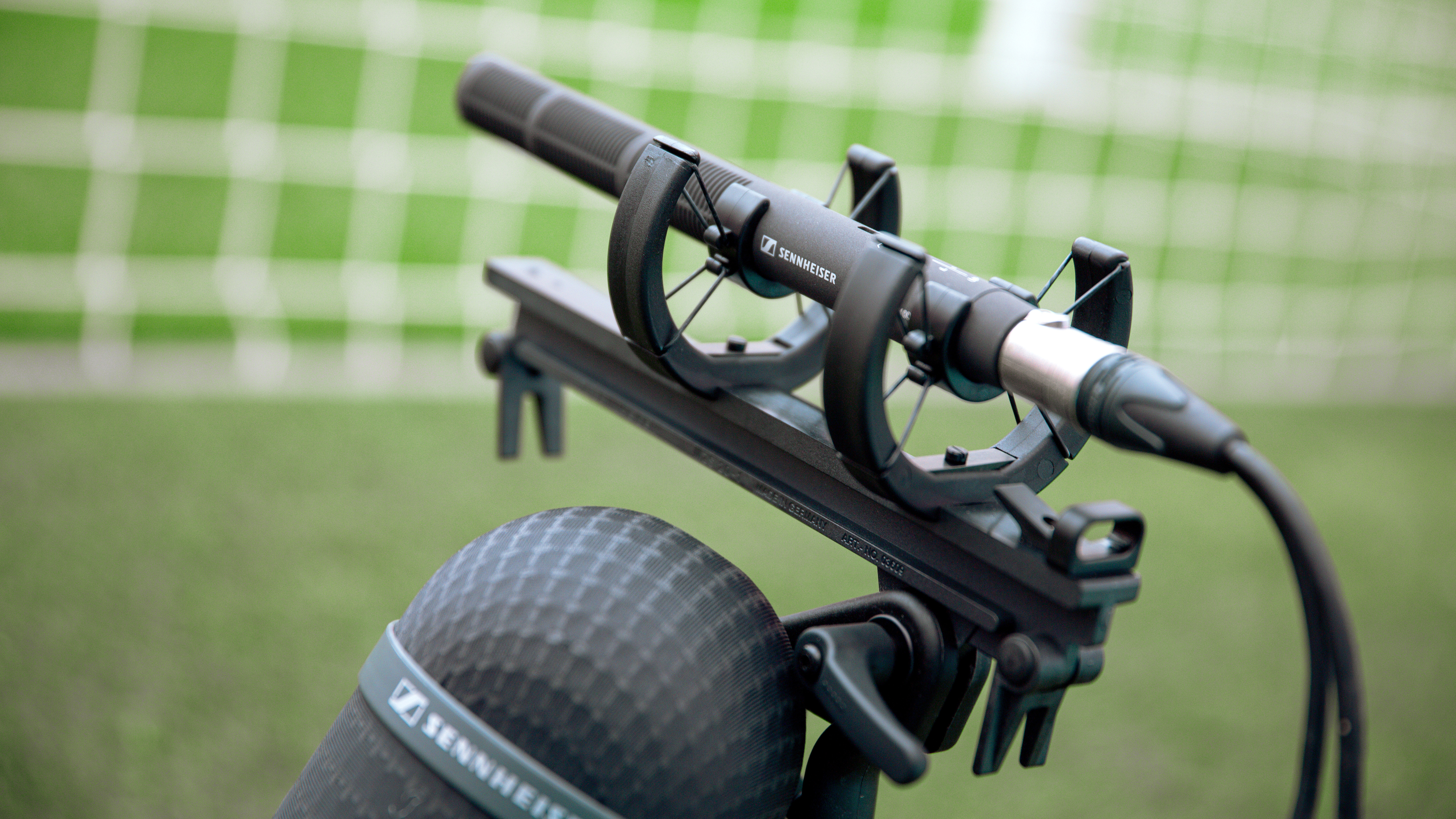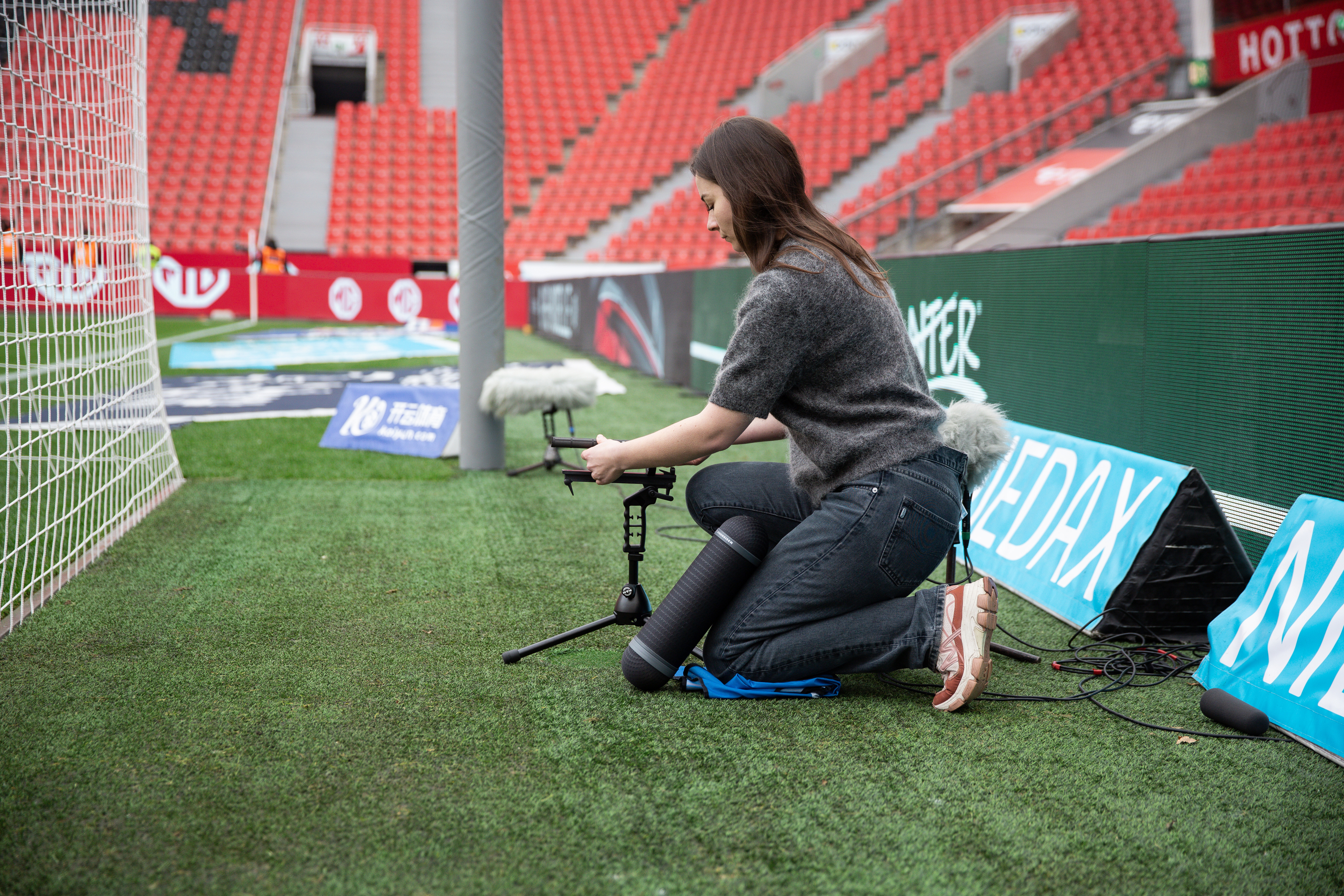Sennheiser introduces a new rugged climate-proof shotgun microphone at NAB 2025
Sennheiser launches the MKH 8018, a compact yet powerful shotgun microphone designed for professional broadcasting and filming

The National Association of Broadcasters (NAB) 2025 has just kicked off in Las Vegas, where a who's who of the biggest names in tech have gathered to showcase new and exciting products, including audio specialists Sennheiser.
Sennheiser has just unveiled the MKH 8018, a compact stereo shotgun microphone designed for the broadcasting and filmmaking industries. Compact and lightweight, the MKH 8018 is the latest in Sennheiser's MKH 8000 range of RF condenser microphones, which are developed for professionals working in the field due to their climate-proof ruggedness and natural sound capture.
Senior product manager for the MKH series Kai Lange says, "The MKH 8018 is a high-class shotgun model that rounds off our MKH portfolio at the top end. It has extremely low self-noise and truly excellent sound, very clear and pure due to the mic’s great off-axis rejection. Moisture resistance, minimal non-linear distortion, and a balanced audio signal at the transformerless, fully floating output are further benefits of the RF condenser technology, which Sennheiser has been perfecting for more than 60 years".

The MKH 8018 is designed for work in the field, therefore, it has been made as easy to handle as possible, measuring 230 mm in length with a diameter of just 22mm. Weighing 115g, Sennheiser has built it with aluminum housing to reduce weight and, in turn, fatigue, whether on a camera or boom pole.
The microphone is also 'climate-proof' with an impressive operating temperature range of -10°C to 60°C (14°F to 140°F) and a storage temperature range of -20°C to 70°C (-4°F to 158°F). It also has a relative humidity level of 5 to 95%, which makes it just as comfortable in the rainforest as in the Arctic Circle.
Audio-wise, as the MKH 8018 is designed for film and broadcasting, it has been limited to a range of 40 – 20,000 Hz to avoid overloading the mixing console. This differs from the usually wide frequency range of the MKH microphones.
The microphone also differs from others in the range as it is non-modular, and features a 'fixed XLR-5M output, integrated -10 dB pad, filters for tailoring the frequency response, and an additional switchable -3 dB low-cut filter at 70 Hz'.
Get the Digital Camera World Newsletter
The best camera deals, reviews, product advice, and unmissable photography news, direct to your inbox!

Sennheiser states that the matrix inside the MKH 8018 "impresses with its homogeneous sound image, and can output MS stereo for further processing in the studio or on a mixer, or – via an internal matrix – XY stereo in a wide or narrow mode without the need for an external mixer".
It continues, "In XY-w, the mic emphasizes the side signal to a greater extent, thus capturing more ambience. In XY-n, the focus is more on the mid signal, giving the sound engineer more directionality".
The Sennheiser MKH 8018 promises to enhance filming and broadcasting capabilities in a lightweight and compact form, ideal for those working on the go.
The MKH 8018 goes on sale this month and will cost $1,999 / £1,675.
you may also like
Check out our guides to the best shotgun microphones and the best wireless microphones.

Kalum is a professional photographer with over a decade of experience, also working as a photo editor and photography writer. Specializing in photography and art books, Kalum has a keen interest in the stories behind the images and often interviews contemporary photographers to gain insights into their practices. With a deep passion for both contemporary and classic photography, Kalum brings this love of the medium to all aspects of his work.
You must confirm your public display name before commenting
Please logout and then login again, you will then be prompted to enter your display name.
